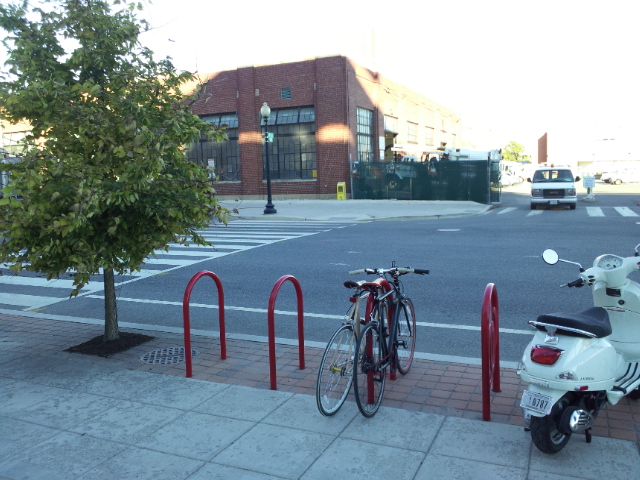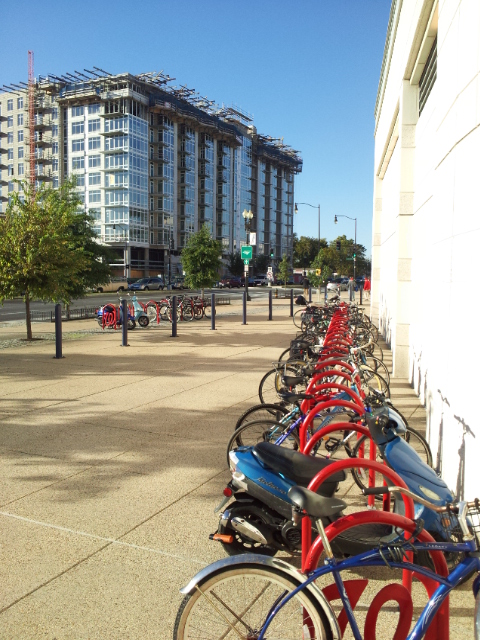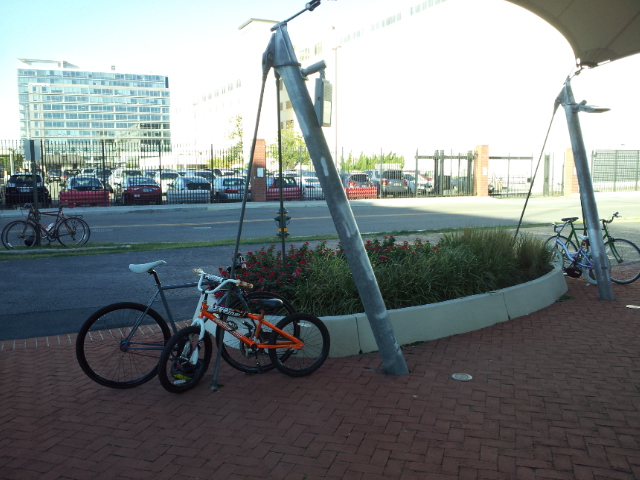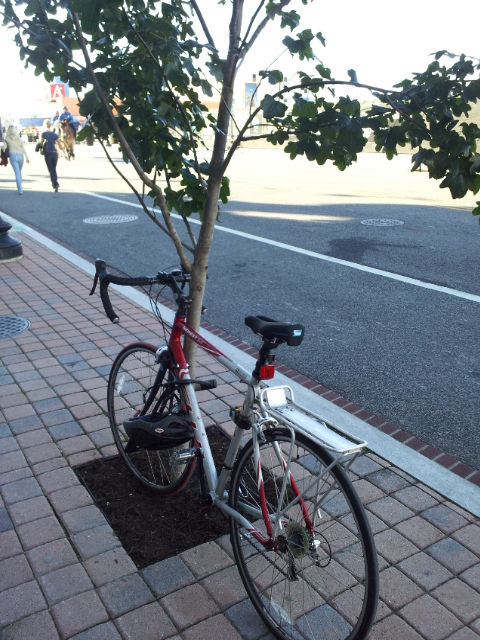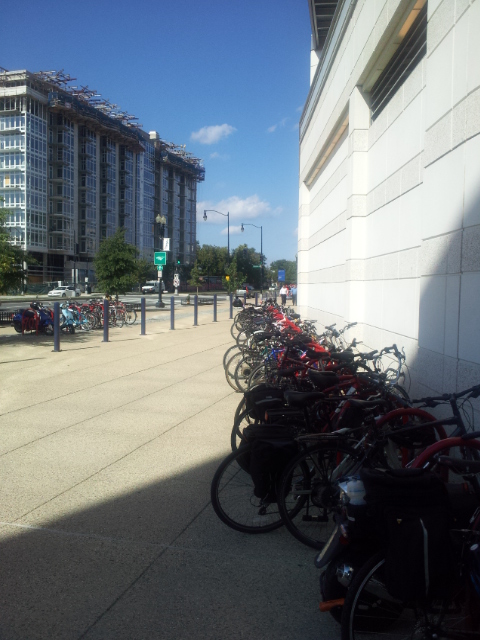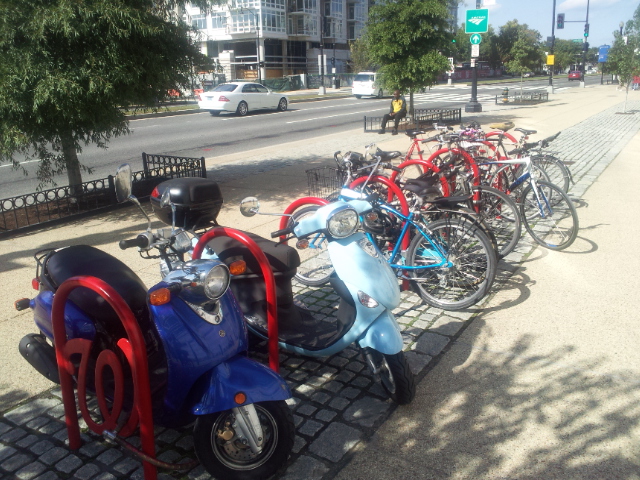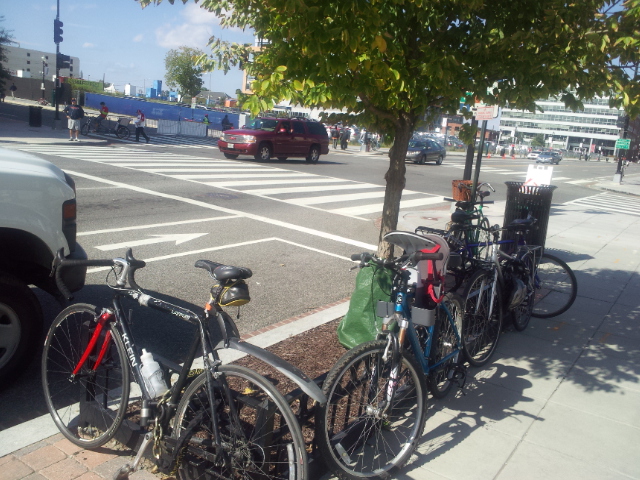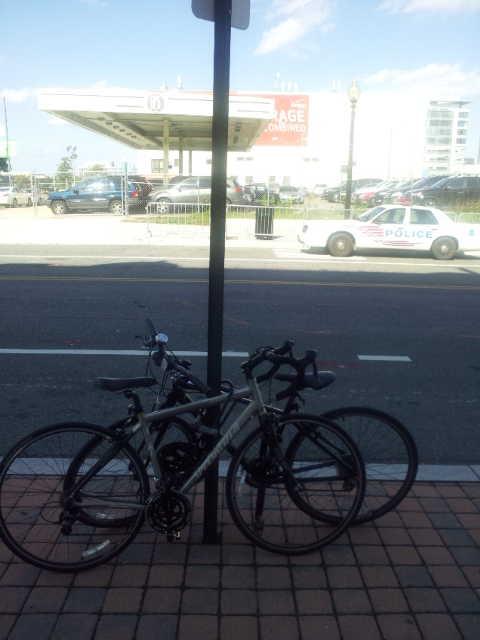(crosspost to Greater Greater Washington)
Bike sharing has been a huge success in many cities and received many well-deserved plaudits, but some have criticized bike sharing for not necessarily serving all segments of the population. What are bike sharing systems doing to expand their reach?
Data on the demographics and socioeconomics of annual bike sharing users is only now emerging, and there are no comprehensive reviews of what bike sharing systems can do to ensure that they serve the entire community.
As a part of my graduate work at Virginia Tech’s Alexandria urban planning program, I asked managers of current and planned North American bike sharing systems what they have done to increase access to bike sharing for low-income communities, and minority groups disproportionately underrepresented in bicycling.
The size and scope of measures to promote bike sharing equity vary, but all types of bike sharing systems are working to lower access barriers.Whether a large established system with significant government investment like Capital Bikeshare, a new small nonprofit system searching for funding like Kansas City B-cycle, or a for-profit system like Decobike Miami Beach, operators are expending the effort to lower access barriers. Here some highlights of how they are doing it:
Station siting: Lowering access barriers starts with placing stations where they primarily serve low-income communities. For example, systems might consciously place stations adjacent to affordable housing, or prioritize expansion to minority neighborhoods disproportionately underrepresented in bicycling.
Many systems reported doing this, including NiceRide Minnesota, which placed 30 stations (or approximately 20% of their system) in areas identified by the community as necessary for equity.
Community-specific marketing and outreach: By reaching out specifically to low-income communities, or by targeting marketing and outreach to the concerns and communications channels of minority communities underrepresented in bicycling, bike sharing systems might be able to tap into latent demand in those communities.
In Arlington County, VA, the largest low-income group is Latinos with limited English proficiency. Arlington is planning a special Spanish-language outreach program for all of the county’s sustainable transportation programs, including Capital Bikeshare.
Financial assistance: Providing some variety of financial assistance was the most common way bike sharing systems promoted equity. Many lower-income people cannot afford the full cost of the annual membership at one time. To deal with that, several systems offer (or plan to offer) installment payment plans.
Bike sharing systems are also partnering with organizations to help qualified recipients obtain a bank account and debit/credit card. Capital Bikeshare introduced its partnership with Bank on DC over a year ago. This program combines a reduced membership fee with access to a credit card, and now has 90 participants.
Another measure that can relieve the financial barrier to bike sharing is not placing a temporary “hold” against a user’s credit or debit limit. Many systems put a hold on the full replacement fee for a bicycle, to guard against bikes not being returned. For people with little money in their checking account, this can make it impossible for them to buy necessities. Arlington is investigating ways to allow for cash payments, which would obviate the need for a debit/credit card entirely.
Boston’s Hubway provided over 550 annual memberships to qualified low-income recipients at a cost of $5 each, along with longer-than-normal free trip durations. Boston also investigated (but ultimately had to cancel) an idea dubbed “Prescribe a Bike,” where medical providers would refer at-risk patients to subsidized bikesharing memberships. The Boston programs are administered and funded by an obesity prevention public health program.
Economic contribution to communities: Bikesharing potentially provides intrinsic economic benefits to all communities by reducing the personal costs of travel for users, and increasing economic activity by generating more trips overall.
But beyond this, I asked systems about ways the bike sharing operations might be directly contributing to the economic well-being of low-income communities, such as actively recruiting employees from low-income communities, locating facilities (and their associated jobs) in places easily accessible to low-income neighborhoods, and partnering and subcontracting with community-oriented nonprofit agencies.
Denver B-cycle partnered with a local Goodwill Industries nonprofit agency to recruit employees from low-income communities. Motreal’s BIXI worked with a youth-service program to provide maintenance labor. Montgomery County, which is soon joining Capital Bikeshare, gave a preference for minority-owned small businesses in subcontracting procurement.
Safe places to ride: With the federal government investing fewer dollars for active transportation infrastructure in low-income neighborhoods, one possible barrier to using bike sharing could be the absence of safe places to ride a bicycle. I asked bike sharing systems to describe any efforts to encourage and promote installing new bicycle travel facilities near residents with lower incomes or disproportionately underrepresented in bicycling.
Kansas City B-cycle, a nonprofit bike sharing entity receiving less than half of its capital funding from government transportation funding (and among the smallest systems in the survey sample) is actively pursuing Safe Routes to School and other grants to directly institute bicycle travel facility improvements themselves.
Membership media: One way to make it easier to pay for bike sharing would be to integrate bikesharing payment media with other accounts that low-income people may already possess, including transit farecards and household utility billing accounts. A number of systems reported plans and efforts for farecard integration, but the hardware is not generally compatible, and there isn’t money available to retrofit the stations.
One system to watch is the planned San Francisco system, which requested in its RFP that bidders discuss whether their systems could be compatible with the regional transit Clipper Card.
Overcoming bicycling barriers: If people have little experience bicycling or don’t own helmets, it can create barriers to bicycling and bikesharing use. Several systems described programs to provide subsidized or free helmets and bicycle safety instruction workshops to communities they want to reach. They worked with bicycle shops, community colleges, and local bicycle advocacy organizations to deliver the helmets and provide the classes.
Boston’s Hubway offers reduced-cost helmets in retail locations in close proximity to stations, and gives free helmets to subsidized low-income members. It also offers instructional bicycling safety classes, though one Boston official characterized attendance at these classes as “low.”
For more details about the survey methodology, details on measures that each system is pursuing address access barriers, caveats, and some suggestions for further research, please take a look at the full paper (PDF). I hope that the report serves as a useful resource for existing and emerging bikesharing systems to broaden participation in this exciting new transportation mode.


